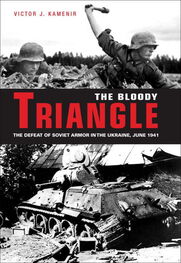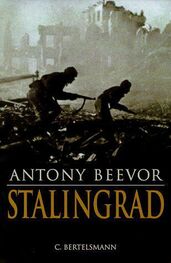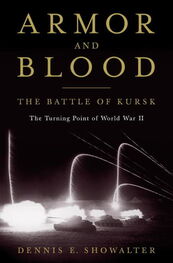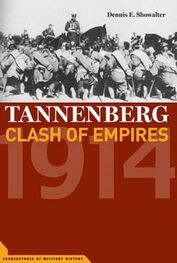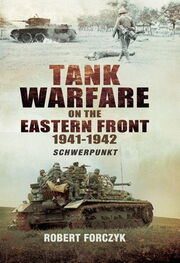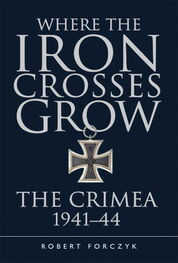
T-35 heavy tank.The two German soldiers in the photo illustrate the scale of this machine. The huge tank weighed in at fifty tons, mounting five turrets and operated by crew of eleven. Only sixty-one of these machines were produced, with the majority of still-operational vehicles concentrated in the VIII Mechanized Corps. Plagued by a multitude of mechanical difficulties, almost all of these tanks were abandoned before coming to grips with the enemy.
ENGLISH LANGUAGE SOURCES
Burdick, Charles, and Hans-Adolf Jacobsen, ed. Abridged. The Halder War Diary , 1939–1942. Novato, CA: Presidio Press, 1988.
Center of Military History. The German Campaign in Russia, Planning and Operations, 1940–1942. Washington, D.C.
Churchill, Winston. The Grand Alliance . Kingsport, TN: Kingsport Press, 1950.
Clark, Alan. Barbarossa: The Russian-German Conflict, 1941–1945. New York: Quill, 1985.
Cooper, Matthew. The German Army, 1933–1945. Chelsea, MI: Scarborough House, 1978.
Dupuy, Trevor. A Genius for War: The German Army and General Staff, 1807–1945 . Englewood Cliffs, NJ: Prentice-Hall, Inc., 1977.
Feist, Uwe, and Heinz Novarra. The German Panzers from Mark I to Mark IV “Panther.” Fallbrook, CA: Aero Publishers, 1966
Fugate, Bryan. Operation Barbarossa: Strategy and Tactics on the Eastern Front, 1941 . Novato, CA: Presidio Press, 1984.
Glantz, David. Stumbling Colossus: The Red Army on the Eve of World War. Lawrence, KS: University Press of Kansas, 1998.
Glantz, David, and Jonathan House. When Titans Clashed: How the Red Army Stopped Hitler. Lawrence, KS: University Press of Kansas, 1995.
Gross, Jan. Revolution from Abroad . Princeton, NJ: Princeton University Press, 2002.
Guderian, Heinz. Panzer Leader . Cambridge: Da Capo Press, 1996.
Habeck, Mary. Storm of Steel: The Development of Armor Doctrine in Germany and the Soviet Union, 1919–1939. Ithaca, NY: Cornell University Press, 2003.
Haupt, Werner. Army Group South: The Wehrmacht in Russia, 1941–1945. Atglen, PA: Shiffer Military History, 1998.
Jentz, Thomas. Panzertruppen, The Complete Guide to the Completion and Combat Employment of Germany’s Tank Force 1933–1942. Atglen, PA: Shiffer Military History, 1996.
Kahn, David, Hitler’s Spies: German Military Intelligence in World War II. New York: Macmillan Publishing, 1978.
Kosyk, Volodymyr. The Third Reich and Ukraine. Translated by Irene Rudnytzky. New York: Peter Lang Publishing, Inc., 1993.
Lefevre, Eric. Brandenburg Division: Commandos of the Reich. Translated by Julia Finel. Paris: Histoire & Collections, 2000.
Montefiore, Simon Sebag. Stalin: The Court of the Red Tsar. New York: Alfred A. Knopf, 2004.
Perrault, Gilles. The Red Orchestra. Translated by Peter Willes. New York: Simon and Schuster, 1967.
Reed, Anthony, and David Fisher. The Deadly Embrace: Hitler, Stalin, and the Nazi-Soviet Pact, 1939–1941. NY: Norton, 1988.
Stolfi, R. H. S. Hitler’s Panzers East. World War II Reinterpreted. Norman, OK: University of Oklahoma Press, 1991.
Trevor-Roper, Hugh, ed. Blitzkrieg to Defeat. Hitler’s War Directives 1935– 1945 . NY: Holt, Rinehart & Winston, 1965.
Warlimont, Walter. Inside Hitler’s Headquarters, 1939–1945 . Translated by R. H. Barry. New York: Praeger, 1964.
Weitz, John. Hitler’s Diplomat: The Life and Times of Joachim von Ribbentrop. New York: Ticknor & Fields, 1992.
RUSSIAN LANGUAGE SOURCES
Bagramyan, Ivan. How the War Was Starting Out. Moscow: Military Publishing, 1977.
Baryatinskiy, Mikhail. Soviet Tanks in Battle . Moscow: Yauza, 2006.
De Lanney, Francois. Translated by Olga Wainer. German Panzers in Ukraine, 1941. Moscow: Eksmo Publishing, 2001.
Drogovoz, Igor et al. The Iron Fist of RKKA, 1932–1941. Moscow: Tekhnika-Molodezhi, 1999.
Irinarkhov, Ruslan. At Dnieper’s Banks. Moscow: AST Publishing, 2006.
Irinarkhov, Ruslan. Kiev Special. Moscow: AST Publishing, 2006.
Isayev, A. V. From Dubno to Rostov . Moscow: Transitkniga, 2005.
Kholyavskiy, Gennadiy, ed. Complete Encyclopedia of World’s Tanks, 1915–2000, Moscow: Harvest Publishing, 2000.
Makarov, Mikhail, and Andrei Pronin. Red Army’s Anti-Tank Artillery. Moscow: Strategiya KM, 2003.
Moschanskiy, Ilya, ed. Operation Barbarossa: Tank Battle in Western Ukraine, 22nd June–7th July, 1941 . Moscow: BTV-MN Publishing, 2002.
Moskalenko, Kiril. On the South-Western Direction, 1941–1943. Moscow: Nauka Publishing, 1975.
Popel, Nikolai. During Difficult Times. Moscow: AST Publishing, 2001.
Rokossovskiy, Konstantin. Soldier’s Duty. Moscow: Military Publishing, 1988.
Shtemenko, Sergei. General Staff During the Years of War: From Stalingrad to Berlin. Moscow: Transitkniga Publishing, 2005.
Vasilevskiy, Aleksandr. Endeavor of My Whole Life. Moscow: Politizdat Publishing, 1988.
Zhukov, Georgiy. Reminiscences and Thoughts . Moscow: Novosti Publishing, 1990.
GERMAN LANGUAGE SOURCES
Grams, Rolf. Die 14. Panzer-Division, 1940–1945. Eggolsheim, Germany: Doerfler Verlag, 2004.
Schrodek, Gustav. Die 11. Panzer-Division “Gespensterdivision”: Bilddokumente, 1940–1945. Eggolsheim, Germany: Doerfler Verlag, 2004.
Schrodek, Gustav. Ihr Galube galt dem Vaterland: Geschichte des Panzer-Regiments 15. Woelfersheim: Podzun-Pallas-Verlag, 1976.
von Mackensen, Eberhard. Vom Bug zum Kaukasus. Nekargemund: Kurt Vowinckel Verlag, 1967.
Werthen, Wolfgang. Geschichte der 16. Panzer-Division, 1939–1945. Woelfersheim: Podzun-Pallas-Verlag, 1958.
MAGAZINE ARTICLES
Parrish, Michael. “Formation and Leadership of the Soviet Mechanized Corps in 1941.” Military Affairs 47, 2 (April 1983): 63–66.
Ratley, Lonnie O., III, “A Lesson of History: The Luftwaffe and Barbarossa.” Air University Review (March-April 1983); English.
Richardson, Charles O. “French Plans for Allied Attacks on the Caucasus Oil Fields January–April 1940.” French Historical Studies 8, 1 (Spring 1973).
Rokossovskiy, Konstantin. “Previously Unpublished Excerpts from Rokossovskiy Memoirs.” Military History Journal (Voenno-Istoricheskiy Zhurnal) (April 1989).
Sella, Amnon. “‘Barbarossa’: Surprise Attack and Communication.” Journal of Contemporary History 13, 3 (July 1978): 555–583.
Yakovlev, Ivan. “Baptism by Fire.” Moscow Journal 5 (May 2003).
E-BOOKS from www.militera.lib.ru/
Arkhipenko, Fyodor. Memoirs of Fighter Pilot. Moscow: Delta, 1999.
Collection of Combat Documents of Great Patriotic War, Volume 33. Moscow: Military Publishing, 1947–1960.
Collection of Combat Documents of Great Patriotic War, Volume 36. Moscow: Military Publishing, 1947–1960.
Fedyuninskiy, Ivan. Awakened by Combat Alarm. Moscow: Military Publishing, 1961.
Grigorenko, Petro. Only Rats are Encountered in Underground. New York: Detinets, 1981.
Kalinin, Nikolay. This is in My Heart Forever . Moscow: Military Publishing, 1967.
Lyudnikov, Ivan. The Road Whole Life Long. Moscow: Military Publishing, 1969.
Читать дальше
